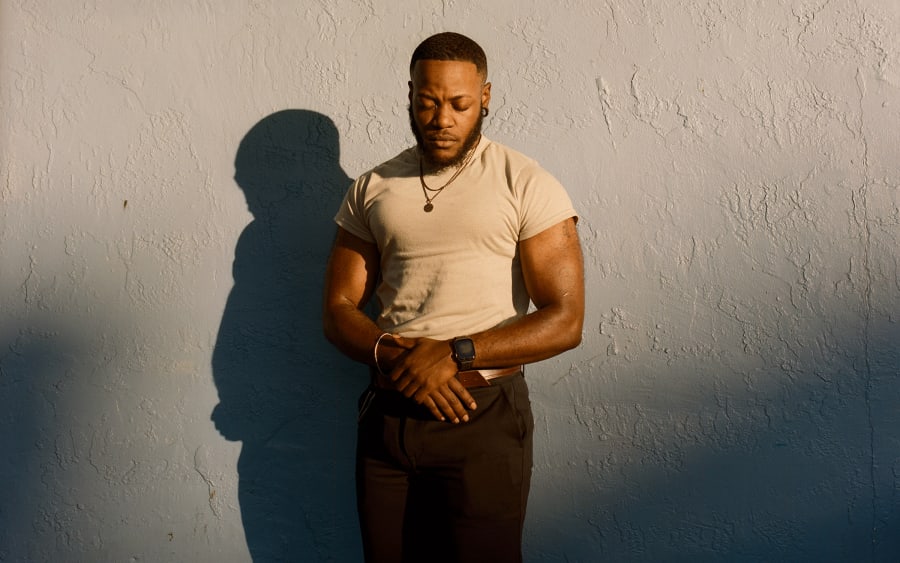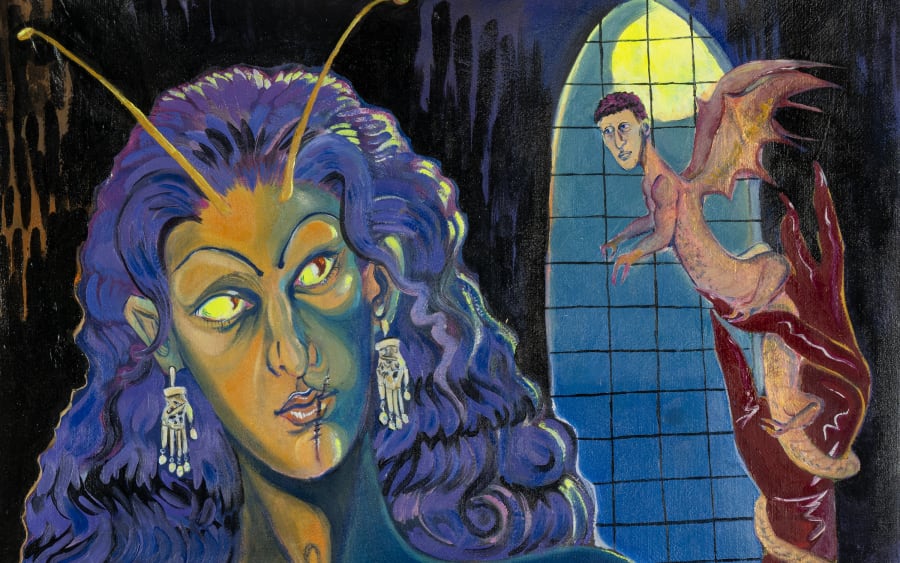Rarely can an artist or fashion designer be described as truly original – free of influences from their predecessors and continuously forging their own path. But one such innovator is Iris van Herpen, who, since 2007, has revolutionized the industry with her distinctive combination of couture-level craft and cutting-edge technology. In 2010, for example, she became the first designer to show a 3D-printed dress on the runway with her ‘Crystallization’ collection. The following year, at just 27 years old, she received an invitation to join the rarefied Chambre Syndicale de la Haute Couture, the French regulating commission that determines if a fashion house is eligible to be a Haute Couture ‘maison’, a denomination that is legally protected.
‘Iris has this confidence to go where nobody is going at the moment. She’s like a 15th- or 16th-century explorer, but instead of crossing oceans, she’s crossing all disciplines, subjects, and cultures,’ says Cloé Pitiot, a trained architect and curator at the Musée des Arts Décoratifs (MAD) in Paris. In November 2023, the museum opened ‘Iris van Herpen: Sculpting the Senses’, curated by Pitiot and assistant curator Louise Curtis, with scenography by Studio Nathalie Crinière. Five years in the making, the show endeavors to present the inner workings of the 39-year-old Dutch designer’s singular mind, which is driven above all by a boundless curiosity. ‘Iris is able to work with biologists, philosophers, sound designers, and foreign craftspeople. She’s interested in everything: an insect, a star in the cosmos, a machine, or a lucid dream,’ says Pitiot. Exhibited objects, ranging from contemporary artworks and furnishings (several of which were specially made for this show), to ancient fossils and natural specimens, draw awe-inspiring parallels with van Herpen’s own designs. ‘For Iris, everything is new territory to explore.’
Integral to understanding van Herpen’s œuvre is her relationship with classical dance. ‘Being a dancer, Iris has a deep connection to the physicality of the body – its strength, creativity, and ability to convey emotion,’ says Pitiot. There’s a kineticism inherent to van Herpen’s work – either a high-action moment is frozen in time, or a fluid garment emits a vibration and energy that makes it feel alive. Some creations, such as shape-shifting headpieces designed with the artist Casey Curran for the Spring 2021 Couture Collection, even discreetly employ mechanics, making them appear as if they move on their own.
The elegant silhouettes of classical dance costumes have additionally inspired van Herpen, who approaches her craft like a ballet, or a ‘a total work of art.’ Music is essential. The name of both van Herpen’s Fall 2010 Ready-to-Wear Collection and a section in the MAD exhibition, ‘Synesthesia’, refer to the neurological condition which causes one’s unrelated sensory experiences to merge. When van Herpen hears music, for example, she can see different patterns and textures – other notable figures blessed with this ability include the painter Vassily Kandinsky and alt-pop star Billie Eilish. This unique, multisensory, immersive experience has become quintessentially van Herpen. She consistently collaborates with like-minded, genre-bending creatives, including Canada-based architect and artist Philip Beesley, known for his responsive installations, and with her partner, the sound artist Salvador Breed. In a similar way to van Herpen, with whom he’s worked for 15 years, Breed combines classical elements, such as string instruments, with electronic sounds and those heard in nature, to produce otherworldly effects. For the MAD exhibition, Breed created sound compositions for each room, the final piece being a 25-minute meditative concert.
Illustrating the duo’s unconventional mastery of synergy between sound and fashion is van Herpen’s Fall 2016 Couture Collection exploring cymatics – the study of visualizing sound waves as changing geometric patterns. Models, clad in patterned, circular ensembles, walked down a runway where the Japanese musician Kazuya Nagaya created and played a Zen bowl sound installation. In other shows, the soundtrack has been the garments themselves. In van Herpen’s Spring 2014 Ready-to-Wear Collection, models strummed and tapped each other’s sensor-embedded clothing, producing electronic sounds, which reverberated through the audience.
In addition to synesthesia, van Herpen is deeply captivated by other human phenomena, such as altered states of consciousness and perception, versus reality – ideas manifested in her optical-illusion fashions. Whether it is the four elements, or the unique physical attributes of different animals, nature may well be considered the designer’s greatest muse. Interested in the metaphorical power of water and rebirth, in her work she frequently references forms, such as vapor, bubbles, or crashing waves. In the opening gallery at MAD, a series of punctured mannequins showcase van Herpen’s vast arsenal of materials, which range from tulle to recycled plastic and even blown glass. The different looks are juxtaposed with corals, urchins, illustrations by the 19th-century German naturalist and biologist Ernst Haeckel, and 18th-century watercolors of jellyfish, whose undulating movements are echoed in van Herpen’s ethereal dresses.
Van Herpen gleans further inspiration from complex organic or manmade structures, such as beehives, underground networks of mycelium, and Gothic cathedrals. Both human and animal skeletal systems are also reflected in her designs, along with the notion of a second skin. Some of the designer’s most iconic and important creations, such as the armor-like 2010 ‘Crystallization’ 3D-printed-dress – made in collaboration with the designer Daniel Widrig, and now in MAD’s collection – epitomize her fascination with such subject matter. Many of van Herpen’s garments verge on the surreal. Growing up in Wamel, Netherlands, near ’s-Hertogenbosch (the hometown of the Flemish painter Hieronymus Bosch), van Herpen developed an interest in fantastical figures and hybrid creatures. This reveals itself in darker forms, such as the 2011 ‘Snake’ dress, in which the body appears to be entangled, and in lighter ensembles inspired by birds’ wings and feathers.
From land to sky, the exhibition culminates in the cosmos, both a source of inspiration and a metaphor for van Herpen’s infinite potential. ‘Mannequins are hanging from the ceiling, sideways, and upside down, so you feel like you’re in another dimension,’ says the curator, adding that this space is arguably ‘the most Iris.’ Never hesitating to go to the extreme, van Herpen had previously enlisted a skydiving champion clad in a gown from her Fall 2021 ‘Earthrise’ Couture Collection to jump from a plane – a video of the epic performance is projected in this space. Heightening the gallery’s surreal scenography, Japanese artist Haruka Kojin’s Contact Lens (2023), a sprawling immersive work composed of acrylic lenses in different sizes, also exemplifies van Herpen’s embrace of art installations to complement and amplify her runway presentations. ‘Iris has an amazing freedom in her creations. There is no limit,’ says Pitiot. ‘She can do everything, and she can go in every direction – back to the past or directly to the future.’
Stephanie Sporn is a New York-based author, specialized in the intersection between art and fashion.
Originally published on February 21, 2024.
Full-bleed image: David Uzochukwu for Iris van Herpen — Hydrozoa Dress, Sensory Seas Collection, 2020. Iris van Herpen private collection.


